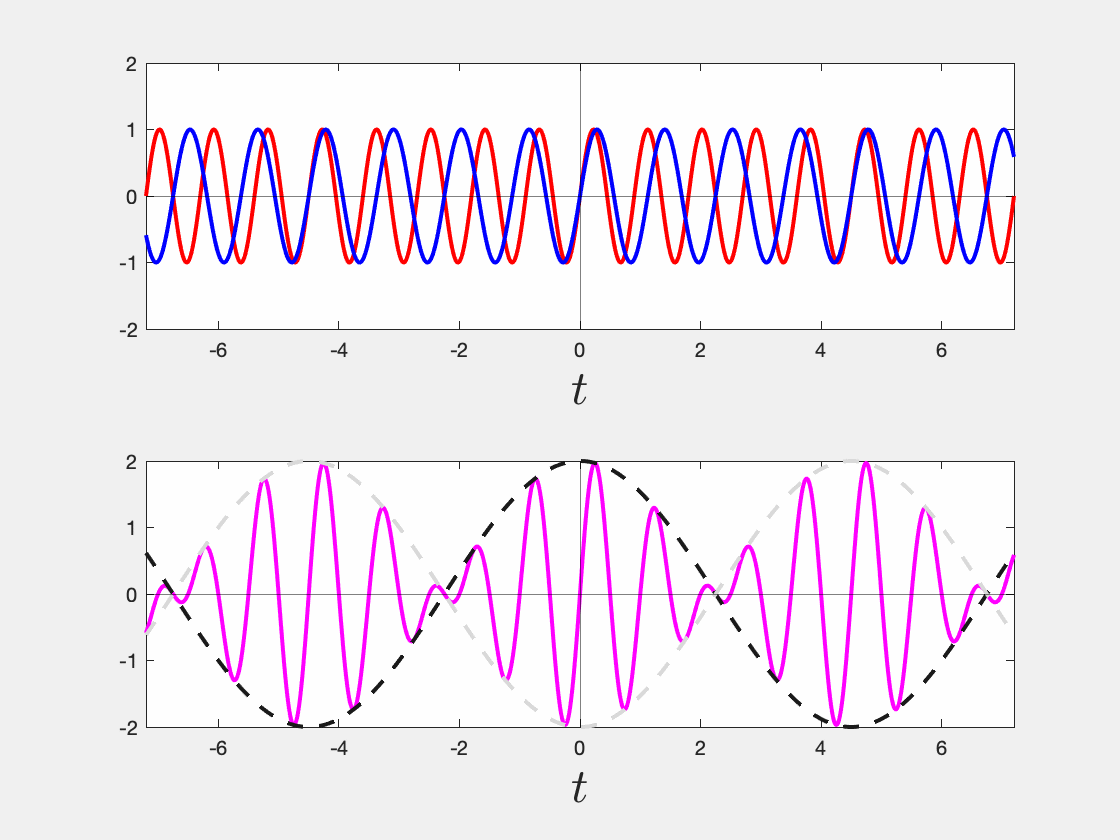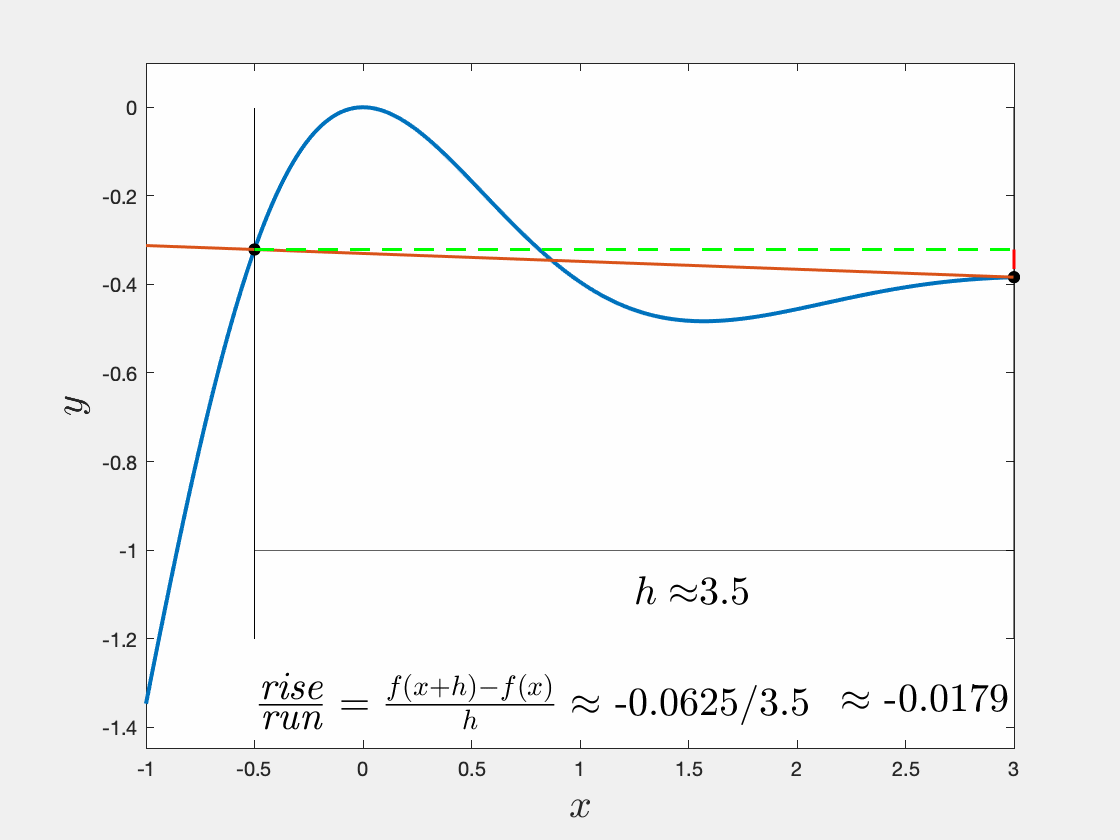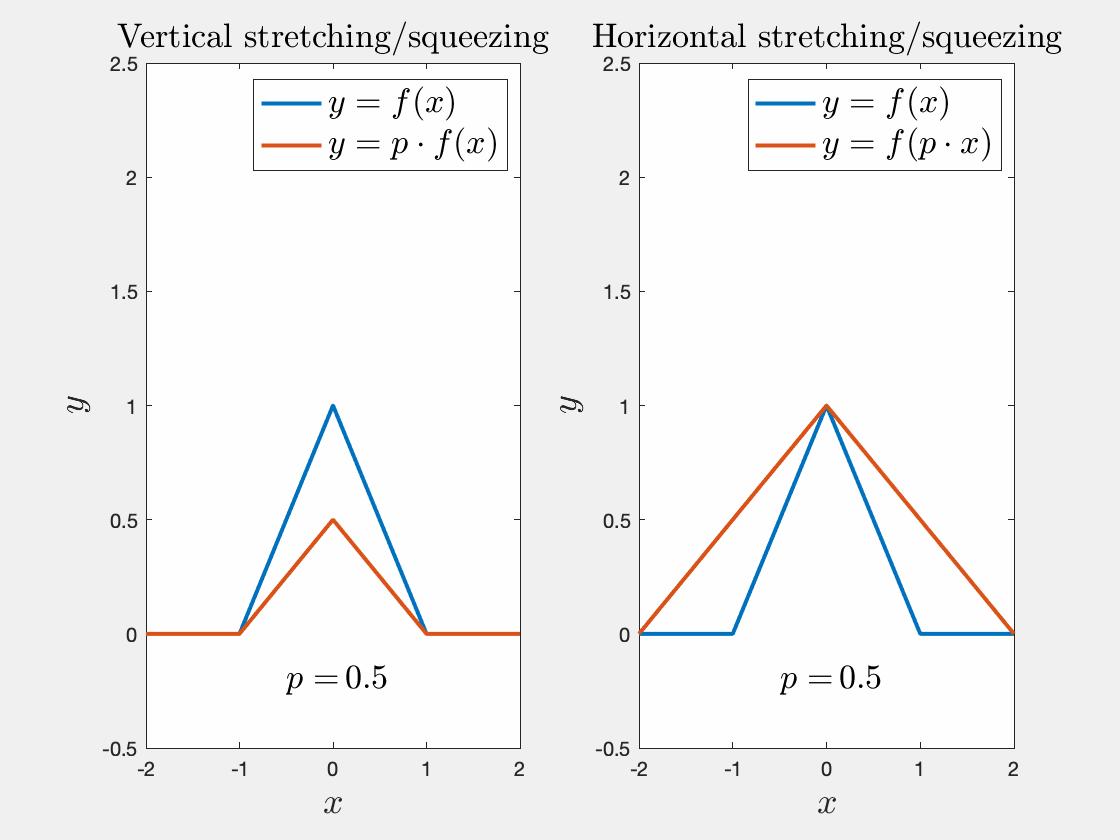The final is comprehensive. For chapters {1,3,4,5,6} study from the 7 quizzes and TWO test that we had. For Chapter 7, go over the derivations below.
\( \S \)7.2 Sum and Difference Identities. Make sure you can derive all identities shown below.
\( \S \)7.3 Double-Angle, Half-Angle, and Reduction Formulas. Make sure you can derive all identities shown below.
\( \S \)7.4 Sum-to-Product and Product-to-Sum Formulas. Make sure you can derive all identities shown below.
\( \S \)7.5 Solving Trigonometric Equations, Problems 59-65.
Important Identities that you should be able to derive are
\begin{align} \cos(\alpha \pm\beta) &= \cos \alpha \cos \beta \mp \sin \alpha \sin \beta \\ \sin(\alpha \pm\beta) &= \sin \alpha \cos \beta \pm \cos \alpha \sin \beta \end{align} Comparing distances of cords on unit circle, we started by deriving the big mama identity $$ \cos(\alpha -\beta) = \cos \alpha \cos \beta + \sin \alpha \sin \beta \tag{Big Mama} $$ Then we used the substitution \( \boxed{\cos(\alpha +\beta) = \cos(\alpha -(-\beta))} \) and the fact(s) that $$ \underbrace{\cos(-x)=\cos(x)}_{\text{even}} \hspace{3mm} \text{ and } \hspace{3mm} \underbrace{\sin(-x)=-\sin(x)}_{\text{odd}} $$ to derive the older daughter identity $$ \cos(\alpha +\beta) = \cos \alpha \cos \beta - \sin \alpha \sin \beta $$ Next order of business was to apply \(\boxed{ \sin (x)=\cos\left(x-\frac{\pi}{2} \right) }\) to the older daughter identity to get \begin{align} \sin (\alpha+ \beta) &= \cos\left((\alpha+\beta)-\frac{\pi}{2} \right) \\ &= \cos\left( \alpha+\left(\beta-\frac{\pi}{2}\right) \right) \\ &= \cos \alpha \, \underbrace{\cos\left( \beta-\frac{\pi}{2} \right)}_{\sin \beta}- \sin \alpha \, \underbrace{\sin\left( \beta-\frac{\pi}{2} \right)}_{-\cos \beta} \\ &= \cos \alpha \sin \beta +\sin \alpha \cos \beta \end{align} and finally \begin{align} \sin (\alpha- \beta) &= \sin \left(\alpha+ (-\beta)\right) \\ &= \cos \alpha\, \underbrace{\sin (-\beta)}_{-\sin\beta} +\sin \alpha\, \underbrace{\cos (-\beta)}_{\cos \beta} \\ &= \sin \alpha \cos \beta -\cos \alpha \sin\beta \end{align} A very special case(s) of colosal importance are the so called double angle identities \begin{align} \sin 2\phi &= \sin\left(\phi+\phi \right)\\ &= \cos \phi \sin \phi +\cos\phi \sin \phi \\ &= 2\cos\phi \sin\phi \\ \cos 2\theta &= \cos\left(\theta+\theta \right) \\ &= \cos\theta \cos\theta -\sin\theta \sin\theta \\ &= \cos^2\theta -\sin^2\theta = \underbrace{1-\sin^2\theta}_{\cos^2\theta}-\sin^2\theta = 1-2\sin^2\theta \\ &= \cos^2\theta-\underbrace{\left( 1-\cos^2\theta \right)}_{\sin^2\theta} \\ &= 2\cos^2\theta -1 \end{align} The last two identities were obtained by solving \(\boxed{\cos 2\theta = 2\cos^2\theta -1}\) for \(\cos^2\theta\) and, \(\boxed{\cos 2\theta = 1-2\sin^2\theta}\) for \(\sin^2\theta\), and they are $$ \boxed{\cos^2\theta =\frac{1}{2}\left[ 1+\cos 2\theta \right]} \hspace{3mm} \text{ and } \hspace{3mm} \boxed{\sin^2\theta =\frac{1}{2}\left[ 1-\cos 2\theta \right]} $$ By substituting (aka change of variable) \(\boxed{x=2\theta}\) which is equivalent to \(\boxed{\theta=\frac{x}{2}}\) we get less important half angle identities $$ \boxed{\cos^2\frac{x}{2} =\frac{1}{2}\left[ 1+\cos x \right]} \hspace{3mm} \text{ and } \hspace{3mm} \boxed{\sin^2\frac{x}{2} =\frac{1}{2}\left[ 1-\cos x \right]} $$
We can obtain one more form from big mama and her daughters. The so called product identities. The big mama and her daughters are enumerated here for easy reference \begin{align} \cos(\alpha +\beta) &= \cos \alpha \cos \beta - \sin \alpha \sin \beta \tag{1} \\ \cos(\alpha -\beta) &= \cos \alpha \cos \beta + \sin \alpha \sin \beta \tag{2} \\ \sin(\alpha +\beta) &= \sin \alpha \cos \beta + \cos \alpha \sin \beta \tag{3} \\ \sin(\alpha -\beta) &= \sin \alpha \cos \beta - \cos \alpha \sin \beta \tag{4} \end{align} Add (3) to (4), then divide by 2 to get $$ \sin \alpha \cos \beta = \frac{1}{2}\left[ \sin(\alpha +\beta) + \sin(\alpha -\beta) \right] \tag{5} $$ Add (1) to (2), then divide by 2 to get $$ \cos \alpha \cos \beta = \frac{1}{2}\left[ \cos(\alpha-\beta)+\cos(\alpha+\beta)\ \right] \tag{6} $$ Finally, \(\frac{(2)-(1)}{2}\) gives $$ \sin\alpha\sin\beta = \frac{1}{2}\left[ \cos(\alpha-\beta)-\cos(\alpha+\beta) \right] \tag{7} $$
Use a change of variable \(\alpha = \frac{u+v}{2}\) and \(\beta = \frac{u-v}{2}\) to obtain sum-to-product identities.


